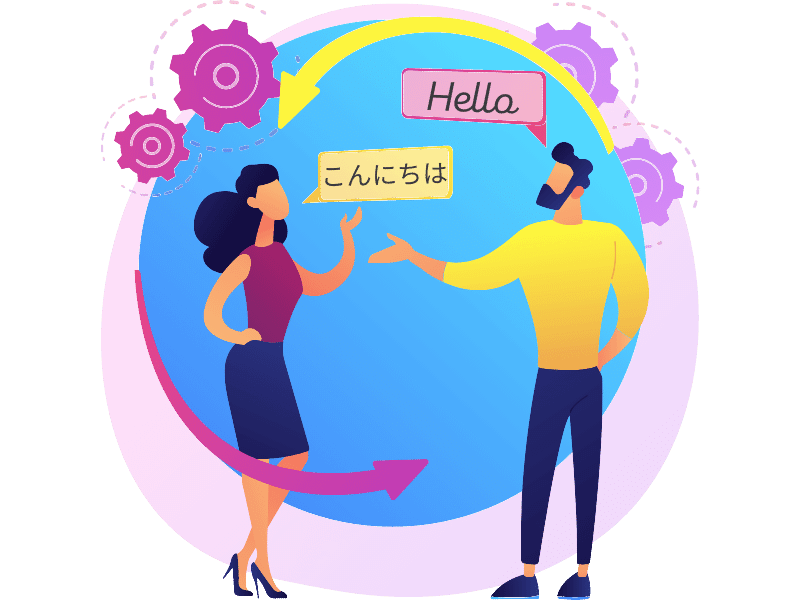FAQ: UI/UX Designers in Japan
Beautifully designed, intuitive products are one of the most important factors for differentiating companies in the ever-shifting tech market. When I started working as a tech recruiter on a team specializing in design positions for companies in Japan, I was eager to understand the nuances required of this kind of position as someone adjacent to (but not quite in) the world of technical design.
My team is particularly focused on growing globalized companies that promote diversity and have a mix of Japanese and foreign employees, so this is the area I have the most experience in. Through relationship building, long study sessions, and viewing about a million portfolios, I’ve come to appreciate just how difficult tech design is. I have a lot of admiration for the field of UI/UX and product design, and appreciate the many visual, communication, technical, and research skills needed to flourish in the field. It certainly takes a special person to excel on all of these fronts.
So, as a non-designer, why am I writing an article addressing FAQ’s in the design industry?
Objectivity.
Being on the outside looking into the design world definitely has its advantages, and myself and other recruiters specializing in a specific field can develop a pretty clear understanding from multiple angles of what it takes to successfully build a team and navigate the market. I spend my days speaking with designers of all levels who are looking for career progression as well as hiring managers, CTOs and CDOs looking to grow their companies and products.
Making that perfect match requires diligence in picking up on whatever clues, patterns, and information I can in order to successfully coach designers through the hiring process. I wanted to share some of the most commonly asked questions my team and I get, as we’ve seen first hand how difficult it is to navigate job hunting as a designer on the Tokyo tech scene.
Interested in what jobs are currently available for designers in Japan? Get in touch.
Q1: How much Japanese language ability do I need to work as a mid-career or senior designer in Tokyo?
While it’s true a lot of technical positions in Japan don’t need Japanese, design is an exception. Typically, these roles will require business level (N2-N1+). The reason, as you can imagine, is the need for smooth communication with users on a client-facing level, as well as internal communication with various product/sales teams and stakeholders with varying levels of technical knowledge and English/Japanese abilities. There are exceptions, of course, and most companies do try to be flexible, but in general you will most likely need business/fluent Japanese.
Product-based companies tend to be a bit more flexible, but, particularly for consulting, business+ Japanese is pretty essential. Designers coming from large scale companies with leadership titles can often get a pass for lower Japanese level. Individual contributor positions with low Japanese requirements often have a very high volume of applicants.
Additionally, because you’ll be most likely focused on the Japanese market, having a deep understanding of the language, cultural nuances, and user profile requires highly advanced language skills. Developing excellent Japanese language skills and cultural understanding (while easier said than done) will automatically make you a significantly higher priority applicant.
Q2: How can I break into the UI/UX field at an entry level?
(This question typically comes from either new grads or graphic/web designers looking to transition.)
UIUX design is certainly difficult to break into in Japan, more so than software development. However, there is an ever-increasing demand for talented designers, and we’ve definitely seen companies invest in junior designers upon recognizing their potential (typically fully bilingual designers). There are a couple things you can do to give yourself the best possible shot.
As someone with little to no experience in design, aside from developing the basic required hard technical and research skills, as I’m sure you’ve heard before, developing an excellent portfolio is essential. Unless you are very dead set on specializing in purely UI design or UX research (which becomes more niche), you’ll want to display a balance of both skill sets.
When hiring managers look at your portfolio, they are asking themselves how your skills will contribute to the growth of their product. It’s not as simple as whether or not they like you or think your design is good. Can this person handle a large growing user base, does their style suit our brand? How much training and oversight will this person need, can they keep up with market shifts and help us remain competitive? You want to show potential employers the most polished possible version of your end to end design process, and provide detailed explanations of your decisions, utilization of data, and overcoming roadblocks.
If you are already working in a different design position such as graphic or web design and want to transition, the best way to do so will probably be in stages. Of course step one will be learning the required software and hard skills, but once you’ve developed a working knowledge of Figma and how to conduct research, find a way to first integrate the UI design side into the type of work you already do.
This may look like adding to the scope of your current position or finding a new position within graphic or web design that has a UI component. From there, you can enrich your portfolio with professional examples, and shift focus to building on the research side. It’s a bit difficult (but not impossible) to jump straight from graphic/web design without some of those professional UI/UX examples to supplement the work in your previous area of expertise, so focusing on building your experience and portfolio in stages is your best bet.
Q3: As an experienced designer, why aren’t I passing portfolio screenings and interviews? How can I differentiate myself in these competitive positions?
Having a great portfolio is just the beginning. As previously mentioned, when assessing your previous work hiring managers will be asking themselves how your style and skills will help grow their product and company. A three year designer with experience working on a platform with millions of users may beat out a five year designer working on a small product because of the scope of projects being worked on.
Most companies, particularly the growing globalized companies, need a designer with existing experience handling large scale products and projects. This is often even more important than coming from the same industry as the company you’re applying to– they need to view you as someone with the capability to grow the product and contribute expertise. Not only do they want to see projects and experience with those big popular brands, they want to see working experience with large products or projects specifically in Japan.
If this area is lacking, trying to pick up projects with these types of companies as a freelancer will boost your portfolio and demonstrate your ability to operate in the Tokyo tech market. The margin for error in bringing a new designer to a permanent team is very slim, so growing companies need to be highly selective in hiring designers who will be able to quickly jump in and push the team forward because you already have a working knowledge of the market.
In addition, displaying excellent communication skills is vital to differentiating yourself. While tech design certainly has an element of creativity and expression, hiring managers will definitely be assessing your analytic communication skills and ability to articulate your process of translating data and research into informed and actionable design choices that have a measurable effect on KPIs. You also need to show that you can easily communicate cross functionally with other internal product/sales teams and stakeholders in a collaborative way.
As the interview process progresses, at a certain point they will assess your ability to handle and productively utilize feedback. Displaying poise, receptiveness, and measurable improvement in response to critical feedback is a highly sought after soft skill that will set you apart from your more prideful counterparts. If they are trying to nudge you to look at something from a different perspective, be sure to pick up on this and keep an open mind. Interviewers often provide feedback not to criticize, but to assess your ability to collaborate.
This is not a 100% foolproof, comprehensive guide to navigating the tech design market and career progression, these are simply suggestions based on the many conversations I have had with people across the industry. There are a lot of common variables that determine both success and failure, and common patterns my colleagues and I have seen pop up again and again.
Of course, there are always exceptions and raw talent will shine through no matter what. My hope is for the information we’ve collected and patterns we’ve noticed to offer some small insight or new perspective to current or aspiring designers seeking to develop their careers here in Tokyo.
If you want to find out more about design jobs in Japan, feel free to connect with me on LinkedIn. I’m always happy to have chat and share some market information.

























